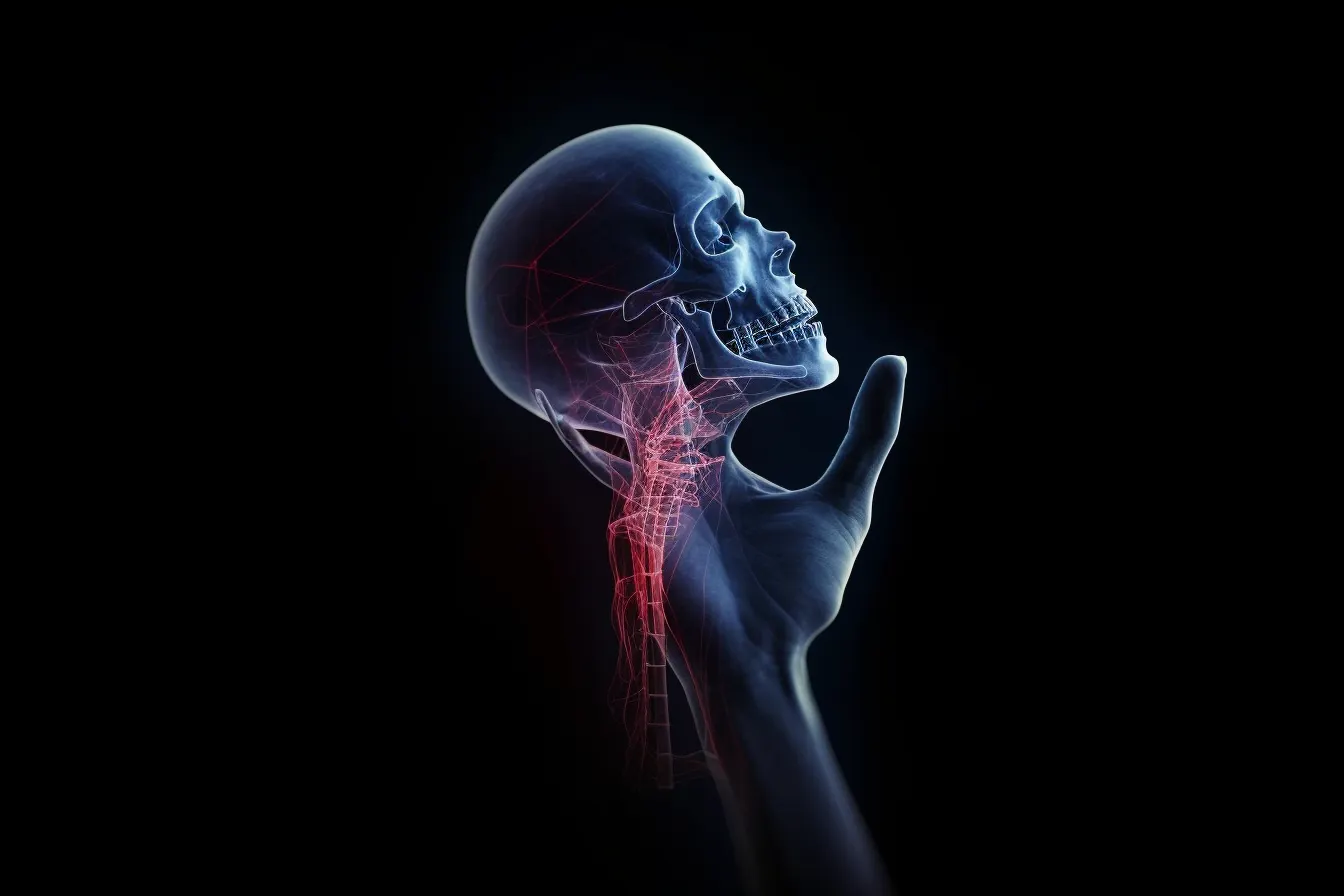The Impact Of Bad Posture
A Tale of A Decade Long Headaches
Maintaining good posture is often overlooked in our modern lifestyles, where hours spent slouched over laptops and prolonged cell phone use have become the norm. However, poor posture can have significant consequences for our health and well-being. In this article, we will explore the effects of bad posture on various aspects of health, with a focus on headaches induced via the trigeminal nerve. We will also delve into the complications associated with everyday habits, such as laptop use and prolonged cell phone use. Additionally, we will touch upon the disparities in healthcare experiences based on socioeconomic class and the intriguing comparison of passion versus money, doctors versus musicians.
My Story
In my personal journey, I have encountered the debilitating effects of headaches, along with associated complications arising from everyday habits such as laptop use and prolonged cell phone use. These habits, which have become an integral part of our modern lives, can significantly impact our well-being and contribute to a range of physical discomforts. Since childhood, I have grappled with recurrent headaches, as well as chest and shoulder blade pain. These symptoms have persisted throughout the years, leading me on a frustrating and expensive journey seeking relief. Countless visits to doctors, multiple rounds of physical therapy, and extensive medical expenses provided little respite.
It was only through the assistance of AI and my own efforts to articulate my experiences that I began to unravel the intricate web of factors influencing my condition. By delving into the wealth of information available, I stumbled upon the significance of the trigeminal nerve and its role in my symptoms along with cervicogenic headaches. This newfound knowledge shed light on the underlying cause, highlighting the importance of proper alignment and the impact of everyday habits on my well-being. One aspect that emerged from my experience was the connection between my blood pressure, diet, and the severity of my symptoms. I noticed that fluctuations in blood pressure, often influenced by dietary factors, could intensify my headaches. As a result, I made conscious changes to my lifestyle, carefully monitoring my salt and sugar intake to maintain stable blood pressure levels.
Additionally, I discovered an unexpected source of relief—regular blood donation. This act of altruism not only provided a sense of purpose but also seemed to alleviate my pain. It is as if the act of giving, coupled with the physiological benefits of blood donation, helped me find temporary respite from the burden of headaches.
To navigate the challenges associated with my condition, I have become reliant on painkillers, keeping them close at hand as a precautionary measure. The fear of an impending headache's onset looms over me, threatening to disrupt my ability to function effectively. Often, the only recourse is to seek solace in sleep, allowing my body to recover and escape the clutches of pain. Driven by the desire to make a positive impact, I share my experiences in the hope that someone else may find solace and relief from similar struggles. Through increased awareness and understanding of the intricate workings of our bodies, we can empower ourselves to seek effective solutions, tailored to our individual needs. By embracing this knowledge, we can embark on a journey towards improved well-being, unlocking the potential for a life free from the grip of chronic pain.
Please note that while my experiences have shaped this passage, it is important to consult with healthcare professionals for accurate diagnosis, personalized advice, and treatment options tailored to your specific circumstances. Each individual's journey is unique, and it is through collaboration with medical experts that we can find the most effective path to healing and relief.
The Trigeminal Nerve and Headaches
The trigeminal nerve, also known as the fifth cranial nerve, is responsible for transmitting sensory information from the face, head, and certain areas of the scalp to the brain. It plays a crucial role in various functions, including facial sensations, biting and chewing, and certain reflexes. When the trigeminal nerve becomes compressed, irritated, or inflamed, it can lead to the development of headaches, specifically known as trigeminal nerve headaches or trigeminal neuralgia. These headaches are often characterized by intense, sharp, or shooting pain that occurs on one side of the head or face. They can be triggered by various factors, including stress, certain foods or drinks, weather changes, or even simple facial movements.
The compression or irritation of the trigeminal nerve can occur due to several reasons. One common cause is the misalignment or dysfunction of the cervical spine (neck), which can result in muscle imbalances, tension, and nerve impingement. Poor posture, such as slouching or hunching, can contribute to these issues and exacerbate trigeminal nerve-related headaches.
Moreover, cervicogenic headaches, which are headaches originating from the neck, can also be associated with the trigeminal nerve. These headaches often present as one-sided pain that radiates from the neck to the head, including the face and temples. The underlying cause of cervicogenic headaches is usually related to neck injuries, muscle imbalances, or cervical spine disorders, all of which can affect the trigeminal nerve. Understanding the role of the trigeminal nerve in headache development can provide valuable insights into potential treatment approaches. In addition to medical interventions, such as prescribed medications or nerve blocks, addressing the underlying causes of trigeminal nerve compression or irritation is crucial for long-term relief.
Physical therapy, including exercises to strengthen and stabilize the neck muscles, may help alleviate tension and reduce pressure on the trigeminal nerve. Correcting posture, practicing relaxation techniques, and adopting ergonomic practices when using electronic devices or sitting for prolonged periods can also play a significant role in preventing or minimizing trigeminal nerve-related headaches.It's important to consult with a healthcare professional, such as a neurologist, pain specialist, or physical therapist, who can provide a comprehensive evaluation and develop a personalized treatment plan based on your specific condition and needs. By addressing the trigeminal nerve's role in headaches and implementing appropriate interventions, it is possible to manage and reduce the frequency and intensity of these debilitating headaches, improving overall quality of life.
Bad Posture and Headaches
One often overlooked contributor to headaches is bad posture, which encompasses a range of postural habits including slouching, hunching, and forward head posture. While it may seem like a minor issue, maintaining poor posture for extended periods can have significant consequences for our overall health and well-being.
When we slouch or hunch forward, our shoulders round forward, causing the chest to cave in and the upper back to curve unnaturally. This misalignment of the spine and neck puts excessive strain on the muscles, ligaments, and joints that support these areas. Over time, this strain can lead to muscle imbalances, tension, and even nerve compression.
The trigeminal nerve, a major cranial nerve responsible for transmitting sensory information from the face to the brain, can be particularly affected by poor posture. When the spine and neck are misaligned due to bad posture, the trigeminal nerve can become compressed or irritated. This compression can lead to the development of one-sided headaches, often characterized by throbbing or pulsating pain on either the left or right side of the head. Additionally, bad posture can contribute to the development of tension headaches. Tension headaches are typically described as a dull, aching pain that affects both sides of the head. The muscle imbalances and tension caused by poor posture can create chronic muscle tightness in the neck, shoulders, and upper back, triggering tension headaches.
Understanding the relationship between bad posture and headaches is crucial for individuals who experience chronic headaches. By recognizing the impact of posture on headache development, individuals can take proactive steps to improve their posture and alleviate their symptoms. Addressing bad posture involves a combination of awareness, education, and corrective measures. Practicing good posture habits, such as sitting and standing with an aligned spine, engaging in regular stretching and strengthening exercises for the neck and upper back muscles, and using ergonomic furniture and tools, can help improve posture and alleviate the strain on the trigeminal nerve.
Seeking professional guidance from physical therapists specialized in posture correction can also be beneficial. These healthcare professionals can provide personalized assessments and recommend specific exercises, stretches, and adjustments to address posture-related issues. By addressing bad posture and its impact on the trigeminal nerve, individuals can significantly reduce the frequency and intensity of their headaches. Taking proactive steps to improve posture not only helps alleviate immediate symptoms but also contributes to long-term health and well-being.
Effects of Everyday Habits
Our daily habits and routines have a significant impact on our overall health, including the occurrence of headaches. Two common culprits in our modern lifestyle are prolonged laptop use and excessive cell phone use. These habits can have detrimental effects on our posture, leading to increased muscle tension and the development of headaches.
Prolonged laptop use often involves sitting in a hunched position, with shoulders rounded and the head jutting forward. This posture places excessive strain on the neck and upper back muscles, disrupting the natural alignment of the spine. Over time, this can result in muscular imbalances, nerve compression, and restricted blood flow to the head, all of which contribute to the onset of headaches. Similarly, excessive cell phone use has become a ubiquitous habit in today's society. Many individuals spend prolonged periods of time looking down at their phones, causing the head to tilt forward and the neck to bend unnaturally. This prolonged forward head posture can strain the neck and shoulder muscles, leading to chronic muscle tension and headaches, particularly in the one-sided area,
By recognizing the impact of these everyday habits on our posture and health, we can take proactive steps to mitigate their effects. Ensuring proper ergonomics during laptop use, such as maintaining a neutral spine, using an adjustable chair and desk, and taking frequent breaks to stretch and relax the neck and shoulder muscles, can significantly reduce the risk of developing headaches.
Likewise, being mindful of our cell phone use and making an effort to hold the phone at eye level rather than looking down can help alleviate strain on the neck and minimize the occurrence of headaches. Additionally, incorporating regular stretching and strengthening exercises for the neck and upper back muscles can help improve posture and reduce muscle imbalances. By making conscious changes to our everyday habits and prioritizing good posture and ergonomics, we can reduce the likelihood of headaches associated with poor posture and improve our overall well-being.
Conclusion
By understanding the effects of bad posture, trigeminal nerve headaches, and the impact of everyday habits, we can make informed decisions to improve our posture, ergonomics, and overall health. This article highlights the significance of maintaining proper posture, especially in the context of headache prevention. Furthermore, it emphasizes the need for equitable healthcare experiences and prompts reflection on the interplay between passion and financial considerations in choosing one's career path. By raising awareness and sharing valuable information, we hope to positively impact the lives of individuals who may be suffering from similar experiences.
Disclaimer: The information provided in this article is for educational purposes only and should not replace medical advice. If you are experiencing chronic headaches or related symptoms, it is recommended to consult with a healthcare professional for a proper diagnosis and treatment plan.
By: Lem Luvah
Remarks...
Be sure to Sign up to the Newsletter to keep up with the latest from me. If anything in this article resonated with you, Leave A Comment or Reaction. If you think It would benefit someone you know, Share even if you have an opposing opinion. We all grow by evolving through conversation and want to build a community where it feels safe to do that. Be sure to join the Facebook Group.
Let's Have A Conversation Of Our Own
















